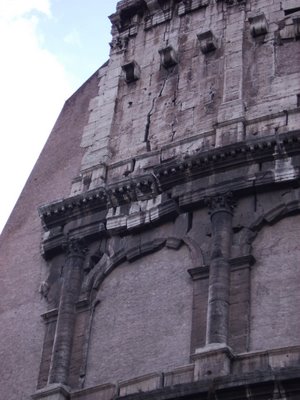026 climatizzazione
I recently read a book called Ciao America! by Beppe Severgnini.
The author, an Italian, lived in Georgetown (in DC) for a few years, writing about the humor of American culture. I wouldn't say it's a great book, but it's an interesting read. I have it at home if anyone wants to borrow it. He also wrote a similar book about Italians, and a third about the Brits, although I have read neither.
In the book, he was incredulous about the level of addiction to air conditioning in the US, which I agree with. But now that I am here in Italy I have a new appreciation for air conditioning. Neither my office nor my home has air conditioning. At home, it's fine because of the thermal mass of the walls and the fact that I am on the 2nd floor of a 10 story building. And I'm only there in the early morning and evening.
At the office, however, I am on the 4th floor of a 4-story building, with an office window facing south-east. And it is HOT. By mid-morning, I am sweating.
Quite a change from working in Georgetown where there is so much air conditioning that you get blasts of cold air from all of the shops and restaurants all down M Street.





